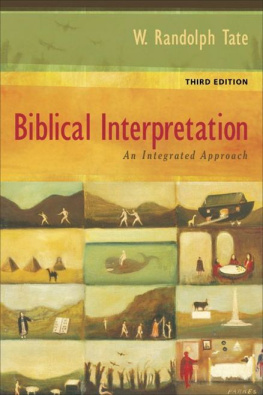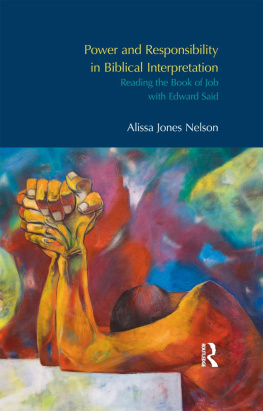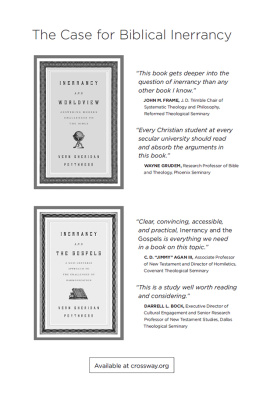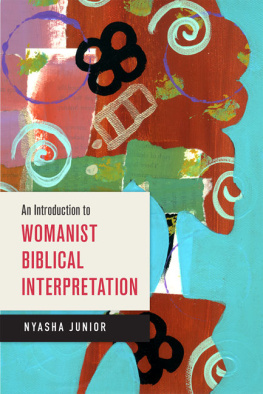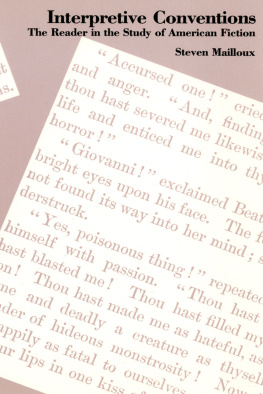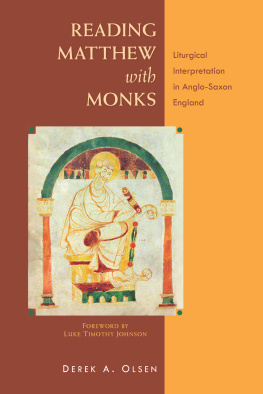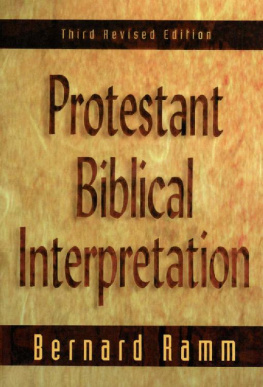
1991, 1997, 2008 by W. Randolph Tate
Published by Baker Academic
a division of Baker Publishing Group
P.O. Box 6287, Grand Rapids, MI 49516-6287
www.bakeracademic.com
Baker Academic edition published 2011
Previously published in 2008 by Hendrickson Publishers
E-book edition created 2012
All rights reserved. No part of this publication may be reproduced, stored in a retrieval system, or transmitted in any form or by any meansfor example, electronic, photocopy, recordingwithout the prior written permission of the publisher. The only exception is brief quotations in printed reviews.
ISBN 978-1-4412-3710-1
Library of Congress Cataloging-in-Publication Data is on file at the Library of Congress, Washington, D.C.
Unless otherwise indicated, Scripture quotations are from the New Revised Standard Version of the Bible, copyright 1989, by the Division of Christian Education of the National Council of the Churches of Christ in the United States of America. Used by permission. All rights reserved.
Scripture quotations labeled RSV are from the Revised Standard Version of the Bible, copyright 1952 [2nd edition, 1971] by the Division of Christian Education of the National Council of the Churches of Christ in the United States of America. Used by permission. All rights reserved.
Scripture quotations labeled NIV are from the Holy Bible, New International Version. NIV. Copyright 1973, 1978, 1984 by Biblica, Inc. Used by permission of Zondervan. All rights reserved worldwide. www.zondervan.com
Cover Art: Anonymous. Untitled 19201930. American Folk Art. Signed: Parkes. Oil on canvas. Ricco-Maresca Gallery, New York, N.Y.
Photo credit: Ricco-Maresca Gallery / Art Resource, N.Y. Used with permission.
Table of Contents
Acknowledgments
I express special appreciation to Dr. Leon Golden of the Department of Humanities, the Florida State University for his catalytic role in the development of my interest in literary criticism. I also express gratitude to Evangel University for providing released time to pursue this project, to Dr. William Griffin, who was gracious enough to develop a program for the indexing, and to Dr. Mark House of Hendrickson Publishers for his editorial assistance in updating both the content and format for this new edition.
Preface to the Third Edition
S ince the appearance of the 1997 revised edition of Biblical Interpretation: An Integrated Approach , the discipline of biblical studies has witnessed an explosion of critical praxes that have changed the face of hermeneutics so profoundly that a hermeneutics text without a discussion of these critical methodologies is severely limited in its vision. Over the last decade, biblical scholars have increasingly realized that interpretation always takes place within social locations that include interpretive methodologies which posture the reader before a text in particular ways by determining what kind of questions the reader asks of the text. Revisions that incorporate the developments in scholarship over the past decade are necessary for the book to have continuing relevance in the field of hermeneutics. For this reason, the third edition includes discussions of critical methodologies that I did not include in previous editions.
In response to students and scholars observations and recommendations, I have also made the following changes and additions:
- Rather than placing descriptions (synopses) of critical methods exclusively in the last unit, I have included three of the most characteristic approaches pertaining to each of the three worlds of biblical interpretation at the end of each of the units where that world is discussed. Additional synopses related to each of the three worlds of interpretation can be found in the appendixes.
In this book I offer an approach to explicating texts that employs elements from a number of approaches from all three worlds: author, text, and reader. Since detailed treatment of these methods would make the book unwieldy as a text to be used in the classroom, I provide brief synopses that offer resources for further readings that reflect the current conditions of biblical hermeneutics. It has been my experience that most serious interpreters of texts are eclectic, either consciously or unconsciously borrowing insights and praxes from several interpretive methods. Although some interpreters focus on the text and its structures and strategies, they invariably find themselves employing historical data in their arguments. The intertextual critic is forced to know something about the literary past if he or she is to make sense of the literary allusions. Critics of the deconstructionist bent must also engage the past in order to understand the manner in which authors unconsciously inscribe marginalized elements of their cultures. They also must become knowledgeable of the history of interpretation. Rhetorical critics must examine the relationship between ideology and rhetorical structures. Feminist critics of all strands examine not only textual structures, but the language, institutions, and ideologies as they are reflected in the text in ways that marginalize segments of societies. Like deconstructionists, they also examine the history of interpretation. My point is that while we group the methods according to primary focus, readers should be aware that all critics find themselves working in all three worlds of author, text, and audience.
The fact is, however, that this is not a textbook on critical methodologies, but an introductory text on doing hermeneutics. I have not consciously adopted one single method, but think that an informed student of hermeneutics should be familiar with the options that the individual methods offer any interested reader. Once readers are familiar with the methods, they are free to borrow from each and combine insights as they see fit. I offer the synopses here to (a) introduce readers to the many doors of access that the methods present, (b) encourage interest in the methods and their potential roles in understanding texts more fully, and (c) assist the reader in recognizing the scope of biblical hermeneutics.
- Given scholars recognition of the constitutive role that readers and their presuppositions play in the interpretive enterprise, I have made some minor changes to ch. 8: What the Reader Brings to the Text.
- I have added an index of subjects to make the book more user-friendly.
- All of the above changes and additions, as well as new developments in the field of biblical interpretation, have necessitated an updated select bibliography.
Preface to the Revised Edition
I am more convinced than ever that the meaning of meaning is meaningless apart from the concept of intertextuality. By intertextuality I mean that human communication takes place within contexts. An author is a complex of textssocial, religious, linguistic, etc. An author can no more free herself from the influences of these texts than a zebra can remove its stripes. It is reasonable, therefore, to retain as an integral part of the discipline of hermeneutics the focus on researching the world of the author. More informed readers make better readers.
When we get right down to it, however, we read not authors, but texts. We interpret texts, not authors. Hermeneutics is first and foremost a discipline concerned with how readers assemble understandings of texts. This means that the primary focus of hermeneutics is the relationship between the enabling structures of a text and the activities of a reader. Consequently, a responsible hermeneutic will give a large portion of its attention to the strategies and structures of texts.
Next page
